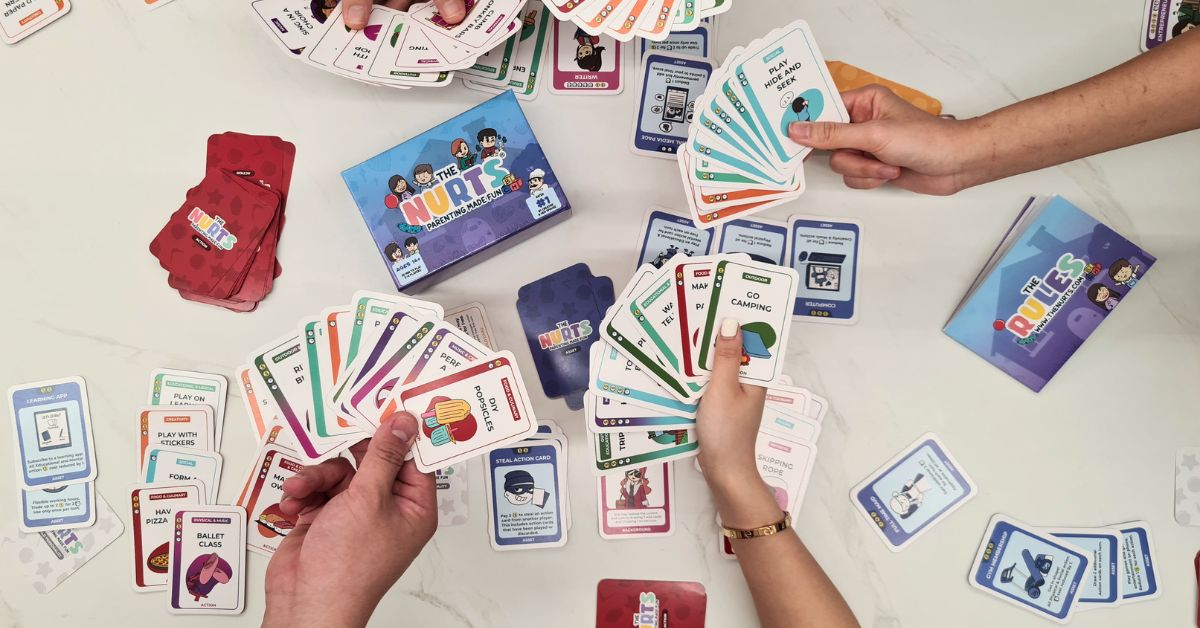When I first came across The Nurts, my first thought was: I am not the target demographic.
With a tagline of “parenting made fun”, The Nurts is a card game where players can realise a “more fulfilling life, nurture development, and develop positivity for both adults and children”.
As wholesome as that sounds, I tend to prefer games that are sillier, with more opportunities to troll and sabotage my fellow players. The Nurts sounded far too… wholesome.
However, I couldn’t say that my interest wasn’t piqued, especially after knowing the story behind the game.
Behind the creator
A mum of three, Rachel Tan drew from her own experiences as a working mother to create The Nurts.
Having been a marketing professional for over 13 years, Rachel’s aim with The Nurts was to gamify parenting and let others experience the journey of parenthood with a dash of fun.
“I have always wondered if there was a fun way to learn and experience the parenting journey—be it managing time, money, or balancing the experiences for our children to ensure they are fulfilled,” she said in the card game’s Kickstarter campaign.

Well, The Nurts is her approach to answering that wonderment.
With that said, the game isn’t just for parents, but for non-parents too.
Still, with the initial sentiment of the game being to help players learn new perspectives on parenting, I wondered what playing it would be like, as someone who isn’t even thinking about having children in the near future.
To answer my own curiosities, Rachel was kind enough to send us not one, but two boxes of The Nurts to try out.
Setting up the game
Wrangling five other (non-parent) teammates to get six players (the game’s maximum number of players per box), we cracked open the box and started familiarising ourselves with the materials.
Each box comes with:
- 18 Background Cards
- 60 Wild Cards
- 30 Asset Cards
- 120 Action Cards
- 12 Child Personality Cards
- 1 Start Here Card
Even with the rulebook, the sheer volume of cards felt overwhelming. So, let me try to break it down.
The objective of the game is to raise the happiest child by earning the most points. Points are obtained by playing action cards, which are each worth one point by default.
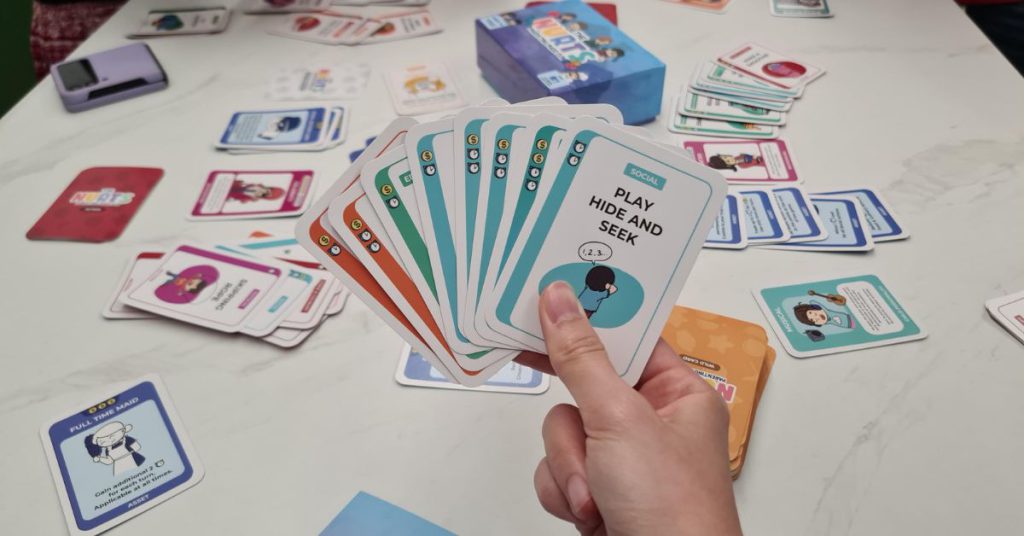
However, depending on your child’s personality (determined by the Child Personality card), you might be able to obtain higher points per card. Because yes, parents shouldn’t impose actions on their kids unless it actually fits their interests.
For example, the Artsy child earns 2x points for Creativity actions.
Action cards are divided into a number of categories, namely Outdoor, Physical, Social, Music, Creativity, Educational & Mental, and Food & Culinary.
Those cards cost a certain amount of time, money, or both. Each player will play as one type of character (determined by the Background Card) which come with a certain number of time and money you can spend.
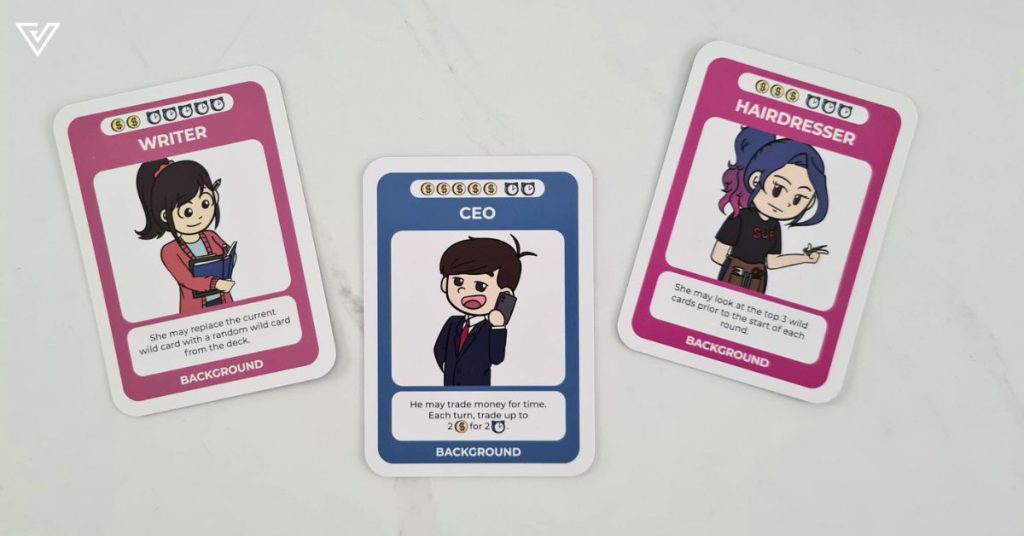
For instance, a Lawyer has four coins (money) and three clocks (time), which are printed on the top of the card. These resources reset each round.
Other than actions, you can also spend the resources on assets, which give you certain bonuses. For example, you can buy a Full-Time Maid for three coins, which lets you gain additional two clocks per turn. This means you have more time to spend on playing more action cards, or buying more assets the next round.
Each round starts by drawing a Wild card, which applies a rule for everyone during the round. For example, there’s the Power Cut card where everyone loses one clock (time).
The number of rounds per game depends on the number of players. For two-player games, you’ll get 15 Wild cards, meaning 15 rounds.
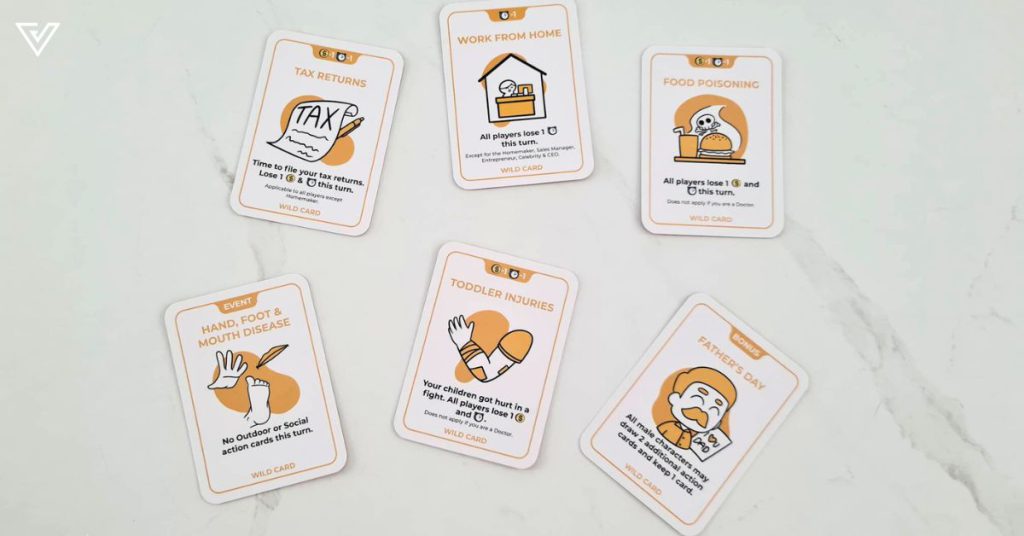
As for six-player groups, you’ll get five wild cards, meaning five rounds.
While the game makes sense to me now, the instructions were admittedly confusing at first. Perhaps we’ve yet to unlock some parent-only level of higher understanding.
The actual gameplay
My Background card was the Celebrity, who had ample money (five coins) and a decent amount of time (three clocks).
The child personality card I pulled was the Foodie. This little guy loves food and thus earns 2x points for Food & Culinary actions, and an additional one point for any Food actions played by others.
However, I was unlucky and only drew one food card throughout the game. So, I decided to play by attacking others (in retrospect, this fit my Karen-like Celebrity background). I did this by guessing other players’ child personalities and buying assets I thought may benefit them.
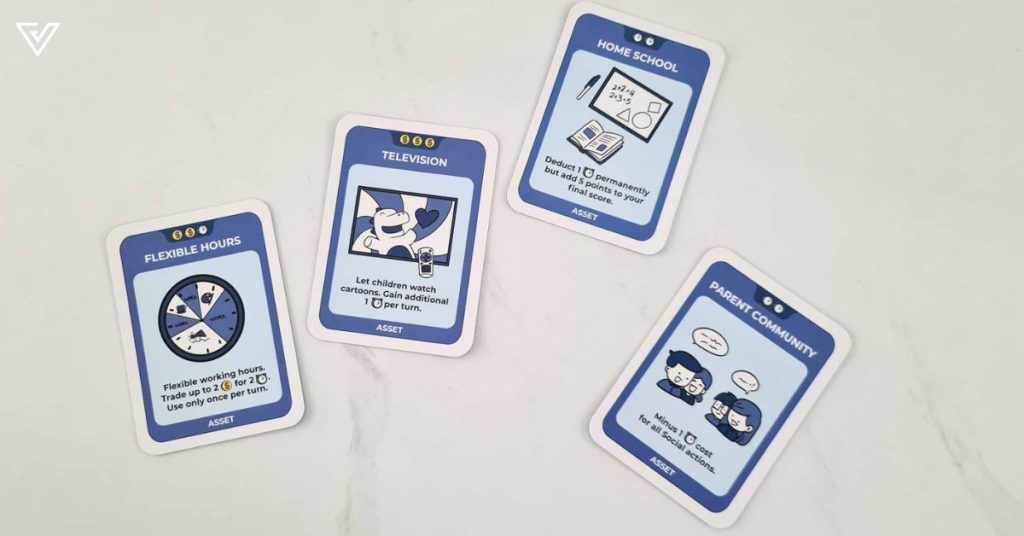
The game played quite slowly because, well, we’re bad at math, so we constantly had to keep track of how many resources we each had left. It would be better to have a pen and notebook with us next time for calculations.
It took us roughly an hour to figure everything out and finish the game, though the box says each game should run 30 minutes. Having understood the game now, I’m sure future games would be much shorter.
Some memorable plays included ones from Rikco, our business development executive, who got the Carefree child. This child earns 2x points for the category the “parent” played the most at the end of the game, which threw us off but explained why Rikco played action cards from so many different categories.
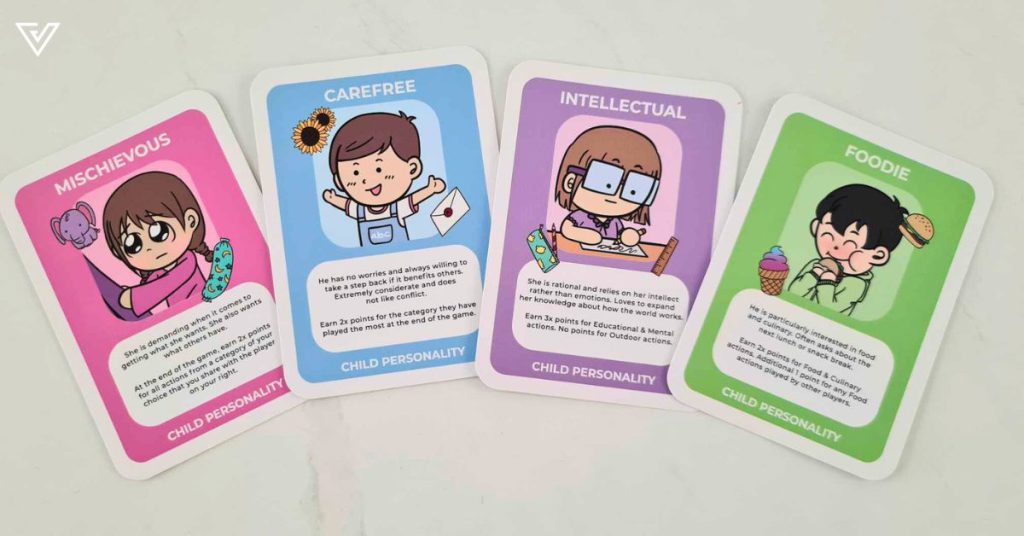
Our client content writer Joyce’s child, the Mischievous child, was also surprising. With this card, Joyce earned 2x points for all actions from a category of her choice that she shared with the player on her right, which was me. And here I thought she was just paying extra attention to me for innocent reasons.
(For the record, Rikco won with his quiet and calm approach, and we always knew he would make a great parent one day.)
Conclusion
Despite our confusion and poor counting skills, we ended up having a lot of fun playing the game. Figuring out the game mechanics together with my colleagues was my favourite part about The Nurts, and hey, isn’t that what parenting is like too?
On that note, the game does draw quite a few astute reflections on society. For one, it showed the inequality between different parents and how luck can play a role in determining what resources a child might have to better their skills.
A more positive lesson here is also how each child’s attributes are unique and how parents should cater to them, instead of the other way around.
The game was also a testament to how competitive, kiasu parents can actually be detrimental to their children’s development. Case in point: my own plays.
In any case, according to The Nurts’ website, players are supposed to have “hours of meaningful and thought-provoking conversations”.
Maybe it was just because we were all too focused on doing the math involved in the game, but we admittedly did not have a singular thought-provoking conversation.
But that doesn’t mean we didn’t have a blast.
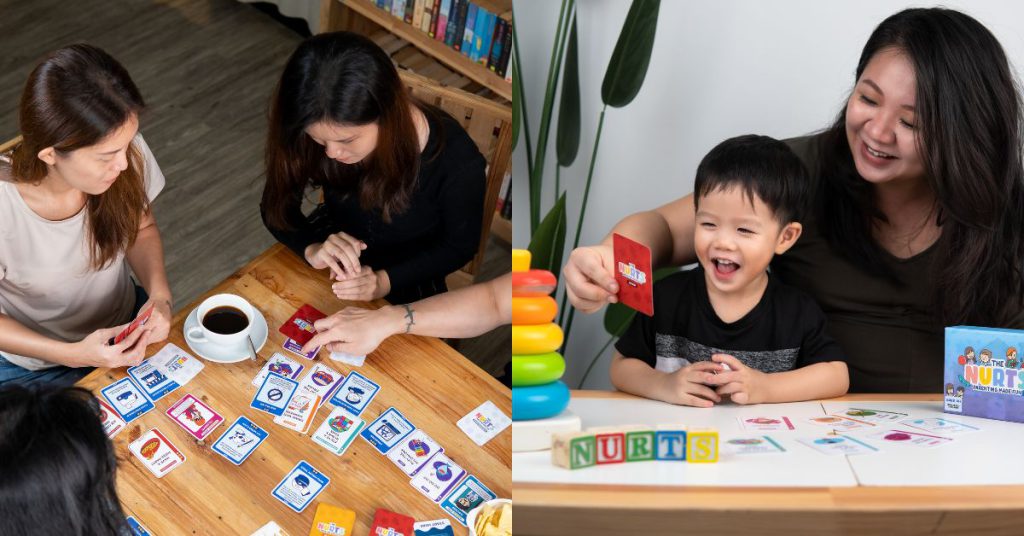
Whether you’re a parent or not, there’s a chance you’ll enjoy this game, but the value you get out of it is different. Real parents might find it to be quite a touching experience, while troll-y non-parents like myself might make it an aggressive, sabotage-filled game.
There’s also a lot of replayability with this game, as you might end up with different child personalities as well as character backgrounds.
Plus, once you familiarise yourself with the game and personality types, you’ll be better equipped at guessing what others’ cards are and how you can beat them.
At the end of the day though, like parenting, The Nurts is all about just figuring things out. So, if you’re confused about the game mechanics, I find that just making it up as you go works just fine.
Featured Image Credit: Vulcan Post

